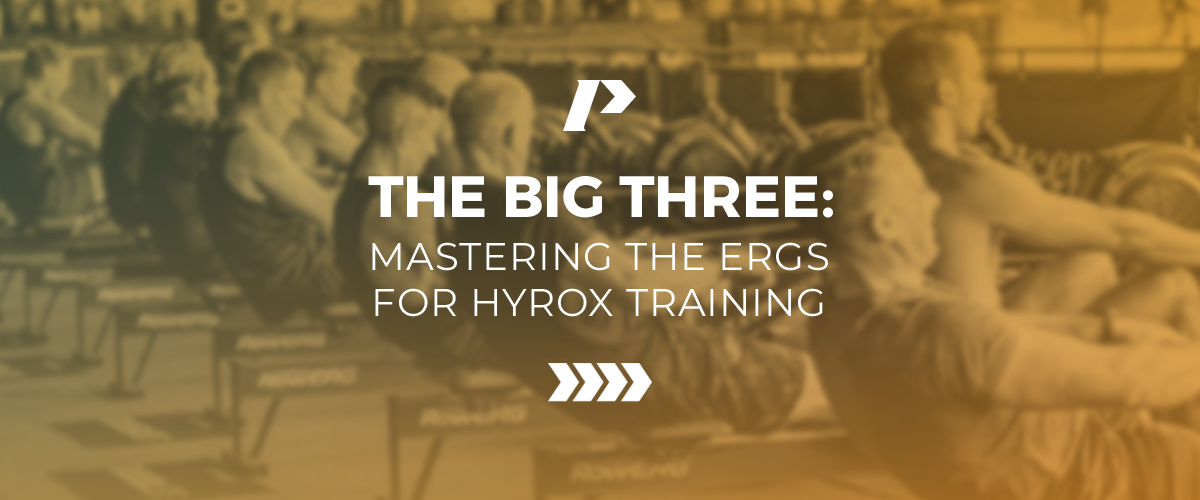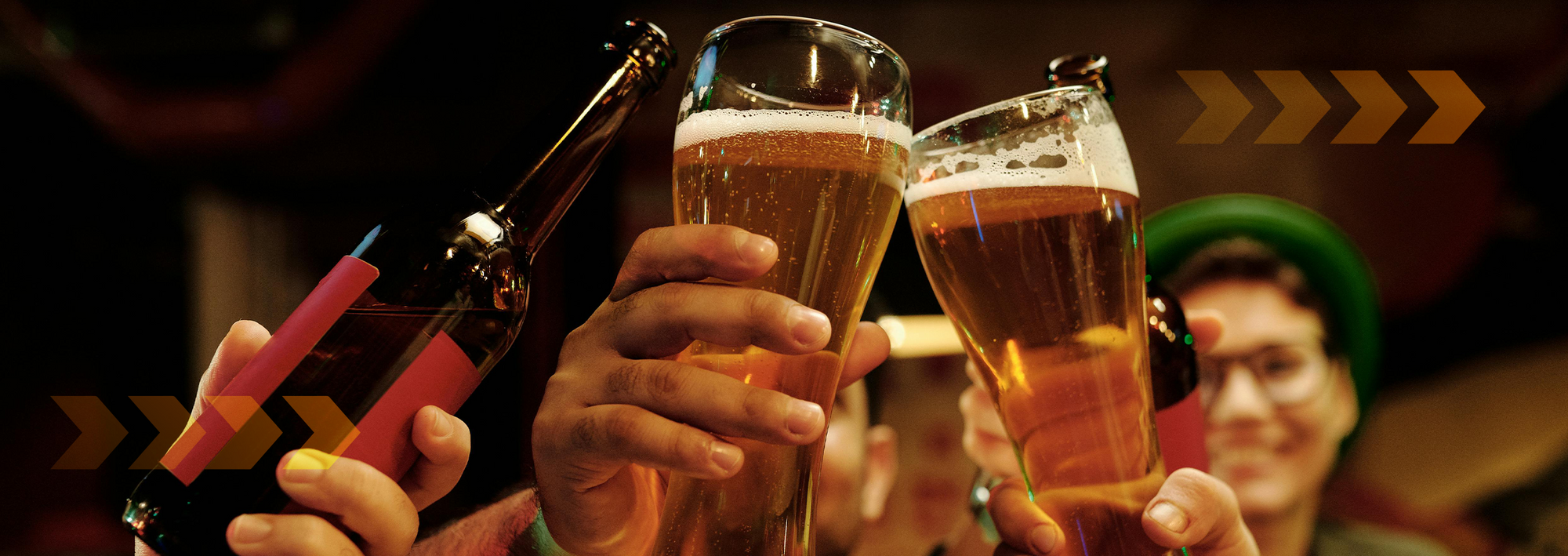When it comes to preparing for Hyrox, an event that tests the limits of your strength, speed, and endurance, incorporating the right equipment into your training regimen is crucial. Among the most valuable tools at your disposal are the three main ergometers (ergs): the rowing machine, the ski erg, and the bike erg. Each of these machines offers unique benefits and can significantly enhance your performance on race day. Let's dive into what makes each of these ergs essential for Hyrox training and how to maximize their potential.
Rowing Machine: Building Total-Body Endurance
Why It's Great: The rowing machine is a powerhouse for full-body conditioning. It engages 86% of your muscles, including your legs, back, core, and arms. This makes it an excellent choice for improving cardiovascular fitness and muscular endurance. Research indicates that rowing can enhance both aerobic and anaerobic capacity, making it a versatile tool for endurance athletes.
Hyrox Relevance: In Hyrox, you need stamina to endure the grueling mix of running and functional exercises. Rowing builds the kind of sustained power output and aerobic capacity that translate well to the endurance demands of the event.
How to Use It:
- Intervals: Try 500m sprints with 1-minute rest intervals. This will enhance your explosive power and recovery rate.
- Long Rows: Incorporate 5,000m to 10,000m rows at a steady pace to build your aerobic base.
- Technique Drills: Focus on perfecting your rowing form with drills that emphasize leg drive, body swing, and arm pull.

Ski Erg: Enhancing Upper Body Strength and Aerobic Capacity
Why It's Great: The ski erg targets your upper body, particularly the lats, shoulders, triceps, and core. It's a fantastic way to develop upper body strength and improve your cardiovascular endurance simultaneously. Studies have shown that the ski erg effectively enhances upper body power and cardiovascular fitness.
Hyrox Relevance: Hyrox events often include exercises that require strong upper body engagement, such as sled pulls and carries. The ski erg helps build the necessary strength and endurance in these muscle groups, contributing to overall race efficiency.
How to Use It:
- High-Intensity Intervals: Perform 30 seconds of maximum effort followed by 30 seconds of rest. Repeat for 10-15 rounds to build upper body power and endurance.
- Endurance Sessions: Complete 5,000m to 10,000m ski sessions at a moderate pace to improve overall aerobic capacity.
-
Technique Focus: Work on maintaining a strong core and efficient pull to maximize power output and prevent fatigue.

Bike Erg: Boosting Leg Power and Cardiovascular Fitness
Why It's Great: The bike erg focuses on your lower body, targeting your quads, hamstrings, and glutes while providing a low-impact cardiovascular workout. It's ideal for building leg strength and enhancing cardiovascular endurance without the joint stress associated with running. Research supports the bike erg’s effectiveness in improving both leg strength and overall aerobic capacity.
Hyrox Relevance: Strong, powerful legs are crucial for Hyrox, especially for movements like lunges, sled pushes, and wall balls. The bike erg helps develop the leg strength and stamina needed to power through these exercises.
How to Use It:
- Sprint Intervals: Try 20 seconds of all-out effort followed by 40 seconds of rest. Repeat for 10-20 rounds to boost leg power and anaerobic capacity.
- Steady-State Rides: Perform 30-60 minute rides at a steady pace to build your aerobic base and enhance endurance .
- Hill Climbs: Simulate hill climbs by increasing the resistance for 3-5 minute intervals, focusing on maintaining a steady cadence and powerful pedal strokes.
Integrating Ergs into Your Hyrox Training Plan
To get the most out of these ergs, integrate them into a well-rounded training plan that includes running, strength training, and functional movements. Here’s a sample weekly schedule:
Monday:
- Rowing Machine: 5,000m steady pace
- Strength Training: Focus on upper body
Tuesday:
- Ski Erg: 30-second sprints x 15
- Functional Training: Sled pulls, burpees
Wednesday:
- Bike Erg: 45-minute steady-state ride
- Strength Training: Focus on lower body
Thursday:
- Rowing Machine: 500m intervals x 10
- Functional Training: Lunges, wall balls
Friday:
- Ski Erg: 5,000m steady pace
- Strength Training: Full-body
Saturday:
- Bike Erg: 20-second sprints x 20
- Long Run: 60-90 minutes
Sunday:
- Active Recovery: Light yoga or stretching
Conclusion
Mastering the rowing machine, ski erg, and bike erg can give you a significant edge in Hyrox competitions. By incorporating these ergs into your training, you’ll build the strength, endurance, and cardiovascular fitness needed to excel. Focus on varied workouts, technique, and consistency, and you’ll be well on your way to Hyrox success.
If you want to find out more about optimizing your nutrition for your Hyrox race, be sure to check out our fueling guide here. Go crush your race!
References
- Hagerman, F. C. (1984). Applied physiology of rowing. Sports Medicine, 1(4), 303-326.
- Steinacker, J. M. (1993). Physiological aspects of training in rowing. International Journal of Sports Medicine, 14(Suppl 1), S3-S10.
- Ingham, S. A., Whyte, G. P., Jones, K., & Nevill, A. M. (2002). Determinants of 2,000 m rowing ergometer performance in elite rowers. European Journal of Applied Physiology, 88, 243-246.
- Bourdin, M., Messonnier, L., Hager, J. P., & Lacour, J. R. (2004). Peak power output predicts rowing ergometer performance in elite male rowers. International Journal of Sports Medicine, 25(5), 368-373.
- Lawton, T. W., Cronin, J. B., & McGuigan, M. R. (2011). Strength testing and training of rowers: A review. Sports Medicine, 41(5), 413-432.
- Ishiko, T. (1984). Biomechanics of rowing. In Biomechanics in Sport (pp. 657-675). Springer, Boston, MA.
- de Koning, J. J., Bobbert, M. F., & Foster, C. (1999). Determination of optimal pacing strategy in track cycling with an energy flow model. Journal of Science and Medicine in Sport, 2(3), 266-277.
- Lindinger, S. J., & Holmberg, H. C. (2011). How do elite cross-country skiers alter their double-poling technique when skiing uphill and downhill? Journal of Sports Sciences, 29(9), 905-913.
- Losnegard, T., Myklebust, H., Skattebo, Ø., Stadheim, H. K., & Sandbakk, Ø. (2017). The influence of pole length on performance, O2-cost and kinematics in double poling. International Journal of Sports Physiology and Performance, 12(2), 211-217.
- Bosco, C., Luhtanen, P., & Komi, P. V. (1983). A simple method for measurement of mechanical power in jumping. European Journal of Applied Physiology and Occupational Physiology, 50, 273-282.
- Losnegard, T., Myklebust, H., & Hallén, J. (2012). Anaerobic capacity as a determinant of performance in sprint skiing. Medicine & Science in Sports & Exercise, 44(4), 673-681.
- Holmberg, H. C., Lindinger, S., Stöggl, T., Eitzlmair, E., & Müller, E. (2006). Biomechanical analysis of double poling in elite cross-country skiers. Medicine & Science in Sports & Exercise, 38(4), 881-889.
- Padilla, S., Mujika, I., Orbananos, J., & Angulo, F. (2000). Exercise intensity during competition time trials in professional road cycling. Medicine & Science in Sports & Exercise, 32(4), 850-856.
- Lucia, A., Hoyos, J., Perez, M., & Chicharro, J. L. (2000). Heart rate and performance parameters in elite cyclists: A longitudinal study. Medicine & Science in Sports & Exercise, 32(10), 1777-1782.
- Bentley, D. J., McNaughton, L. R., Thompson, D., Vleck, V. E., & Batterham, A. M. (2001). Peak power output, the lactate threshold, and time trial performance in cyclists. Medicine & Science in Sports & Exercise, 33(12), 2077-2081.
- Palmer, G. S., Dennis, S. C




